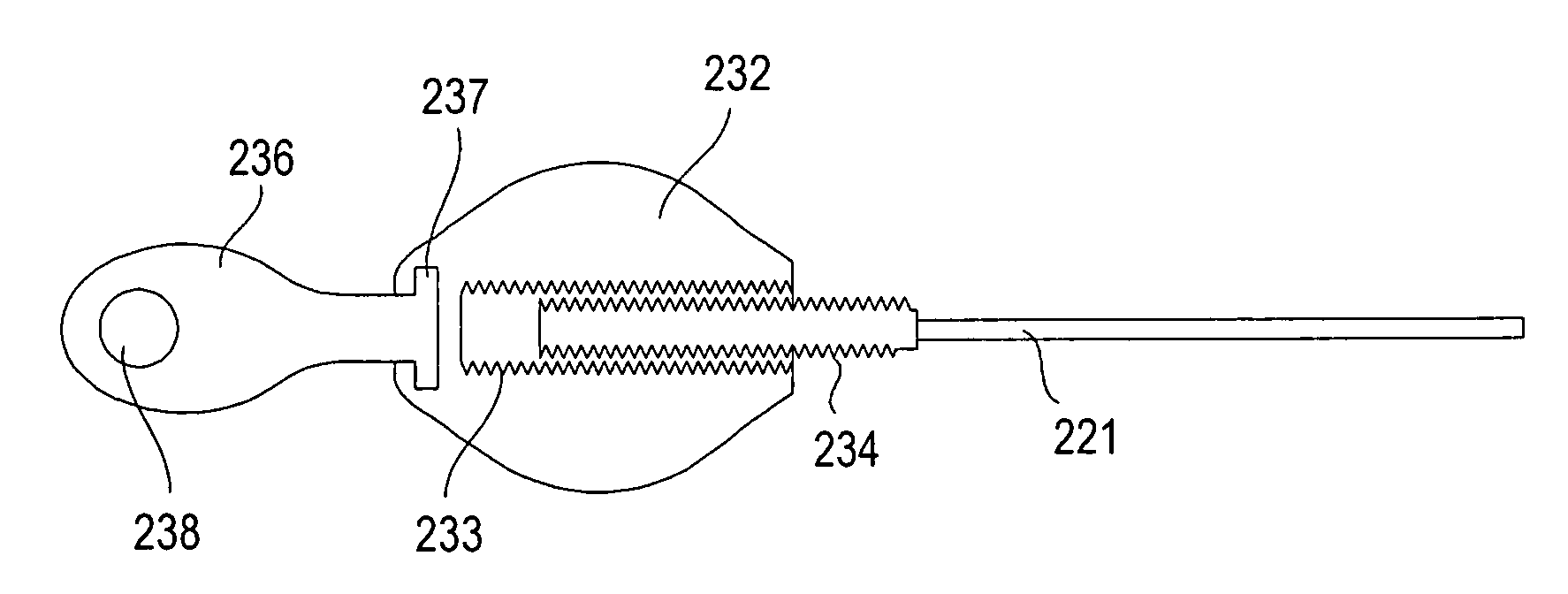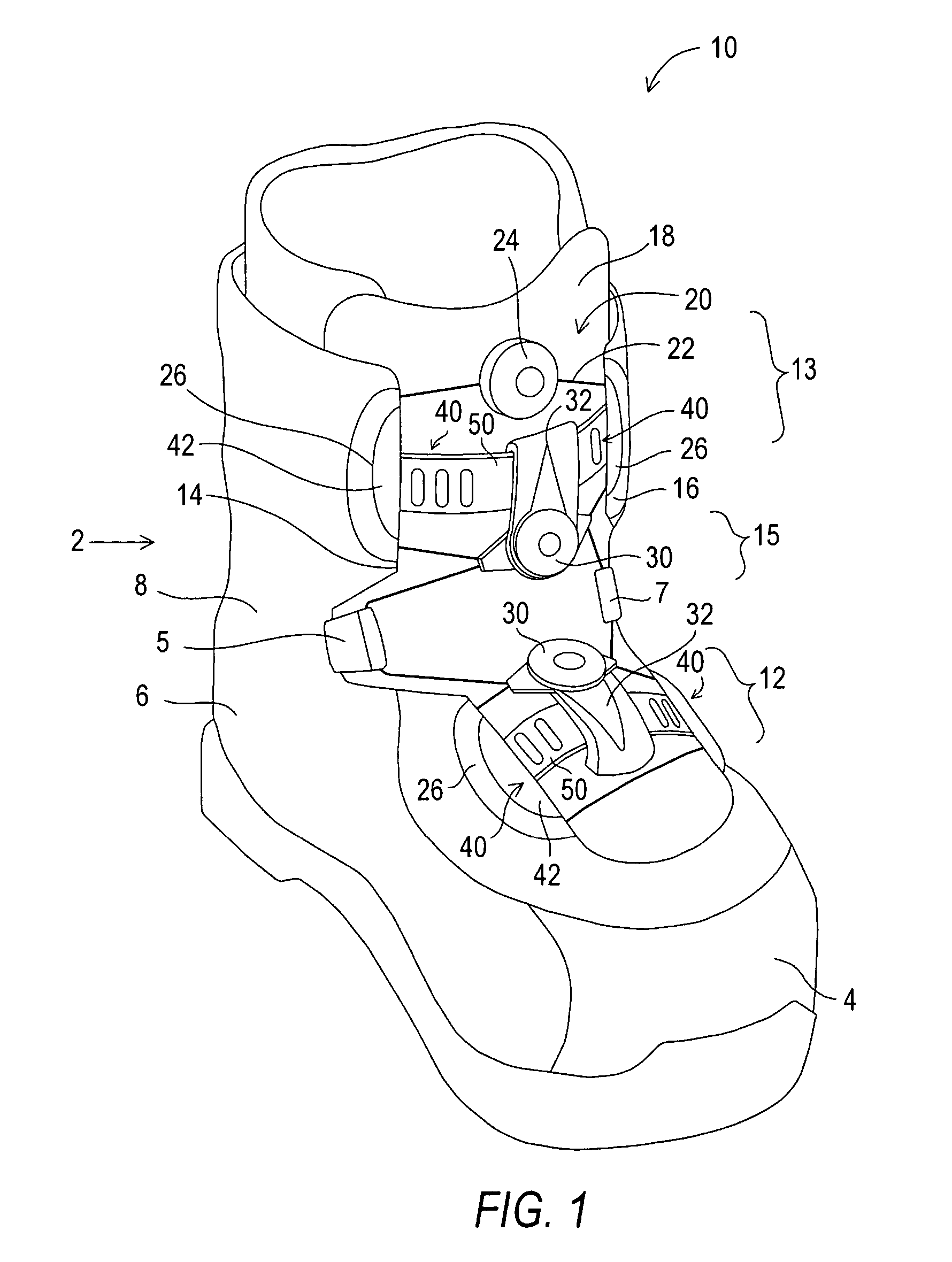Footwear variable tension lacing systems
a lacing system and variable tension technology, applied in the direction of shoe lace fastenings, fastenings, footwear, etc., can solve the problems of tightening force not being adequately distributed along the length of the threaded zone, adversely affecting performance, and certain portions of the shoe being tighter, etc., to achieve comfortable and secure fit, easy to adjust
- Summary
- Abstract
- Description
- Claims
- Application Information
AI Technical Summary
Benefits of technology
Problems solved by technology
Method used
Image
Examples
Embodiment Construction
[0051]FIG. 1 is a perspective view of a sports boot 10 illustrating a lacing system 20 that includes a first implementation of a stop device according to the invention. The sport boot 10 generally is a snowboard boot or other sport boot that is tightened about a wearer's foot using the lacing system. Although the present invention will be described herein with reference to a snowboard boot, it should be understood that the invention can be used with a wide variety of footwear.
[0052]The boot 10 includes an upper 2 that includes a toe section 4, a heel portion 6, and an ankle portion 8 that surrounds the wearer's ankle. An instep portion 12 of the upper is located in between the toe and ankle areas. The boot upper includes two opposed closure edges 14 and 16 that partially cover a tongue 18. The upper may be manufactured from any of a wide variety of materials known to those skilled in the art. For example, some snowboard boots are typically made of soft leather that conforms to the s...
PUM
 Login to View More
Login to View More Abstract
Description
Claims
Application Information
 Login to View More
Login to View More - R&D
- Intellectual Property
- Life Sciences
- Materials
- Tech Scout
- Unparalleled Data Quality
- Higher Quality Content
- 60% Fewer Hallucinations
Browse by: Latest US Patents, China's latest patents, Technical Efficacy Thesaurus, Application Domain, Technology Topic, Popular Technical Reports.
© 2025 PatSnap. All rights reserved.Legal|Privacy policy|Modern Slavery Act Transparency Statement|Sitemap|About US| Contact US: help@patsnap.com



